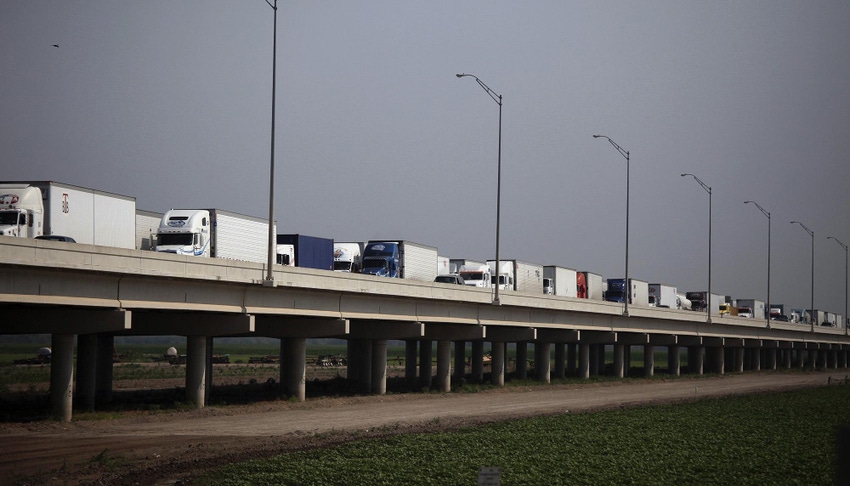
Agriculture, like most industries, is dependent on transportation to move commodities and other agricultural products from point to point and to receive supplies and material for use on the farm. While agriculture uses many types of transportation to move their goods, including rail, barge, and trucking, higher costs in either of those transportation methods can have a significant financial impact on farmers.
Trucking officials are sounding the alarm that the cost of trucking, which has jumped excessively in recent weeks, may be going even higher in the near future, a major concern for both consumers and produce growers across the United States.
In early January, a truckload of refrigerated foods moving from Washington State to New York was priced at around $8,450. That same truck driving the same route two weeks later is bringing prices close to $10,000 a truckload. From a Washington State apple grower's perspective, that raises the cost of moving a carton of fresh apples coast-to-coast by around 14 percent.
And it's not just shipping from the Northwest that has increased in price. According to USDA, truck rates for fresh food from California's produce-rich valleys in route eastward made a nearly 25 percent jump over prices for the same period last year.
The reason for the rapid increase in trucking costs are being blamed on two major factors— the availability of trucks and a shortage of drivers in some areas. A third, and possibly more troubling reason, may rest with the delayed but soon-to-be-implemented federal requirement to install electronic logging devices (ELDs) into all trucks to better track driver hours of service, a plan federal transportation officials say is necessary to make highways safer.
Electronic Logging
The electronic logging device rule was mandated by Congress as a part of the federal Moving Ahead for Progress (MAP-21) initiative, a campaign intended to help create a safer work environment for drivers and motorists nationwide. ELDs would replace the need for drivers to manually enter driving time into their log books and would make the electronic data, which is captured by connecting directly to the vehicle, easier to access by enforcement agencies. According to the Federal Motor Carrier Safety Administration (FMCSA), an ELD synchronized with a vehicle engine automatically will prevent drivers who fail to limit their hours of operation behind the wheel from driving longer hours to boost their earnings.
While federal law has long required drivers to log driving hours in an on-board log book, many drivers have falsified those records to get more driving time than allowed by law. In effect, with few exceptions, long haul drivers are not allowed to operate a commercial interstate truck more than 60 to 70 hours in a seven day period before taking a minimum 34 hour break away from the job.
ELDs will ensure driving limitation rules are more closely adhered to, according to transportation officials in Washington. Drivers and independent truckers say the change will greatly reduce their overall earnings. Trucking officials fear the new system will increase trucking costs significantly and will force many drivers out of the industry in search of greener pastures and less regulation.
Winter Weather
In addition to a shortage of trucks and pending ELD regulations, trucking officials also admit that say heavy winter storms have caused delays and backlogs of shipments in January so far, and this is another reason for a jump in recent transportation costs. In some cases, reports indicate drivers were unwilling to risk the severe winter conditions because of the likelihood of accident or mishap on the open road.
In addition, reports from transportation brokers near land ports between Mexico and the U.S. indicate increased trucking costs may be related to an increasing shortage of experienced drivers in recent months. Many drivers have left the industry as a result of plans to crackdown on operator hour regulations and because of higher wages in other fields of work. Another problem may be increased enforcement of Mexican drivers who do not have a U.S. driver's license.
Regardless the cause, increased costs for trucking will need to be absorbed at some level. Shippers say retailers are slow to accept and pass-through increased transportation costs, and the trucking industry's challenges related to driver shortages only further amplifies the problem. But agricultural producers say with low commodity and food crop prices, an increase in shipping costs may be a burden too big to handle in the long run.
From the farm to the processor, and packer to the grocery store, most agree the higher cost of doing business will eventually result in higher prices at the retail level, resulting in increased consumer costs, which may eventually affect every one up and down the supply chain.
About the Author(s)
You May Also Like






